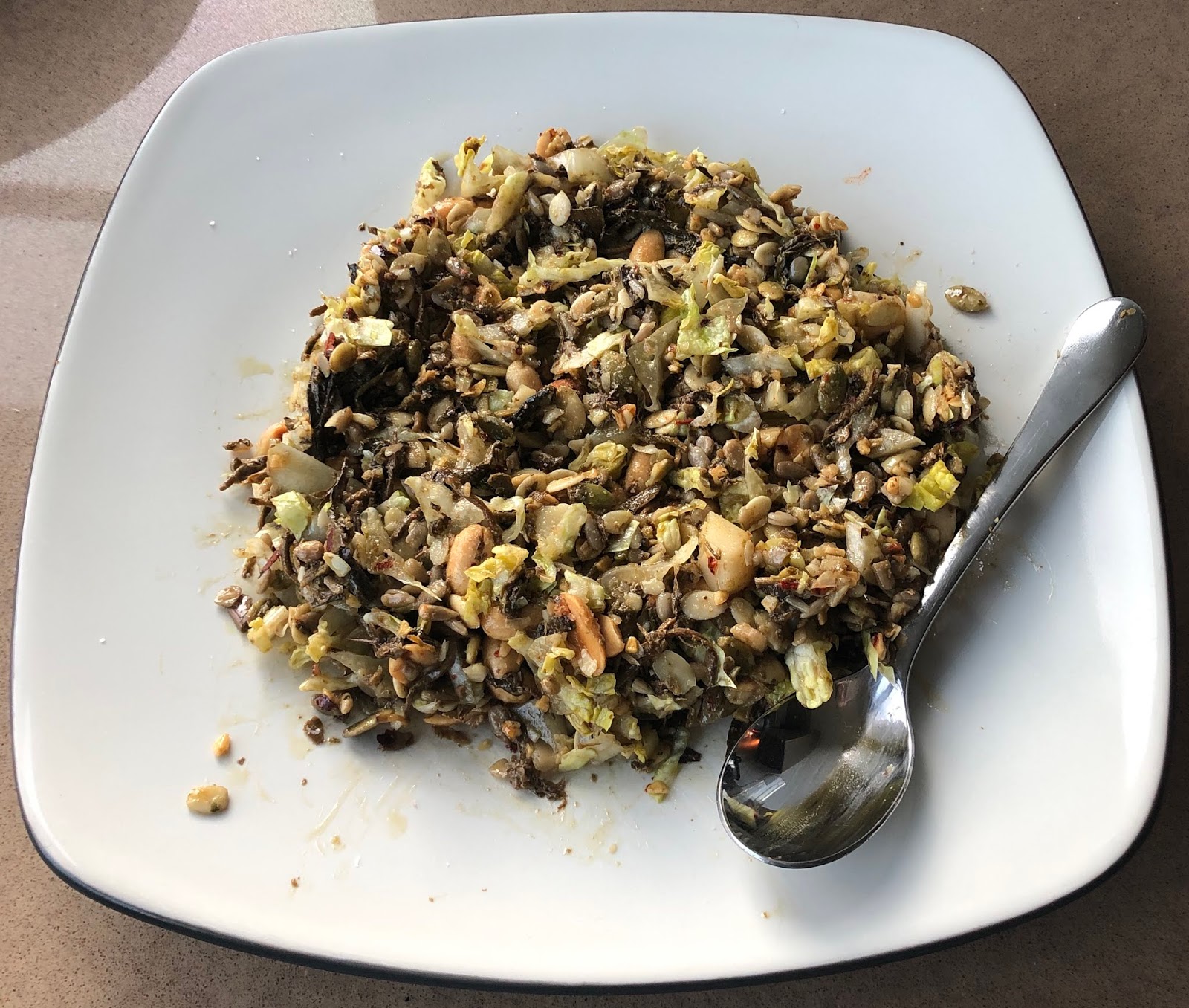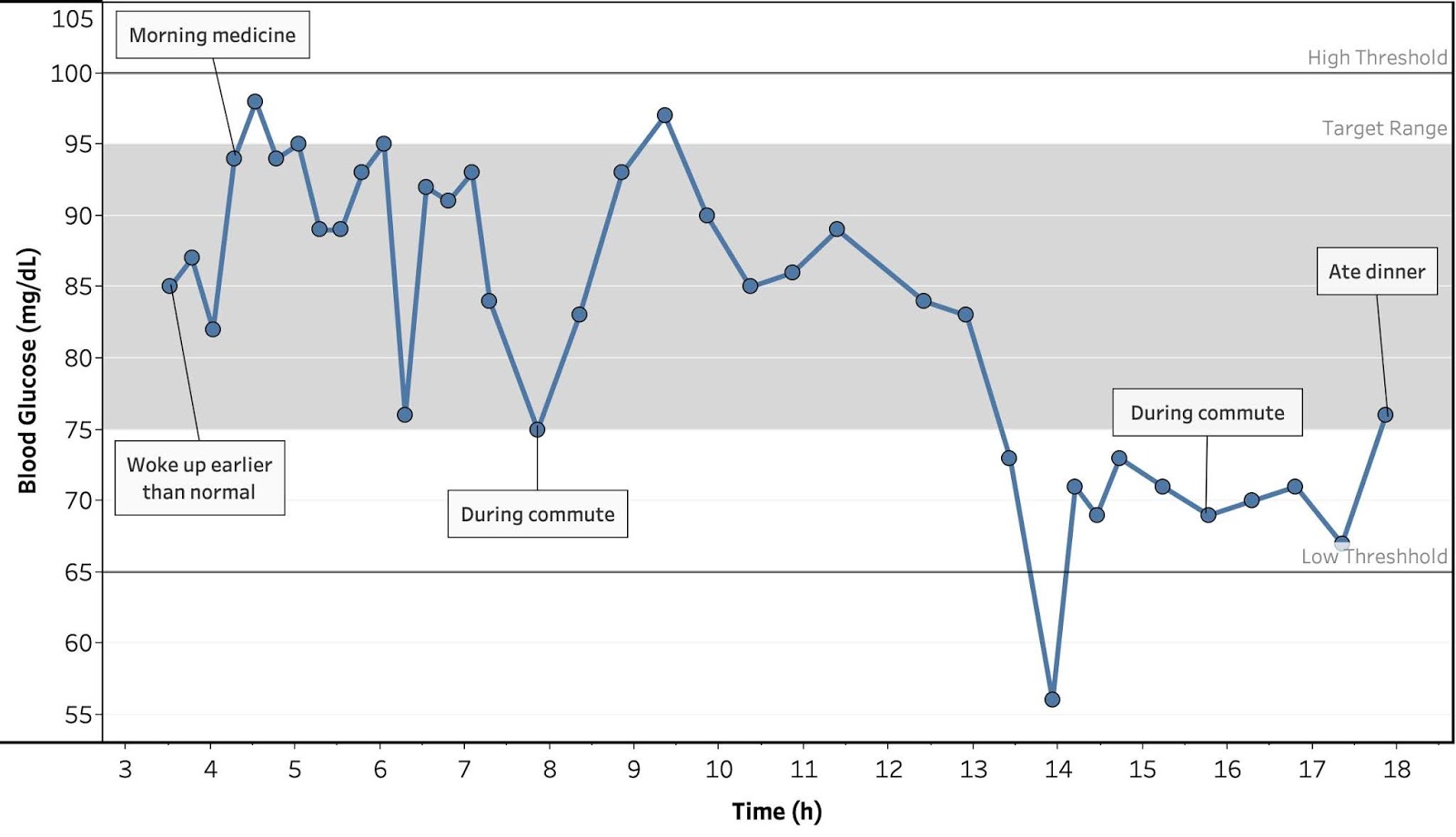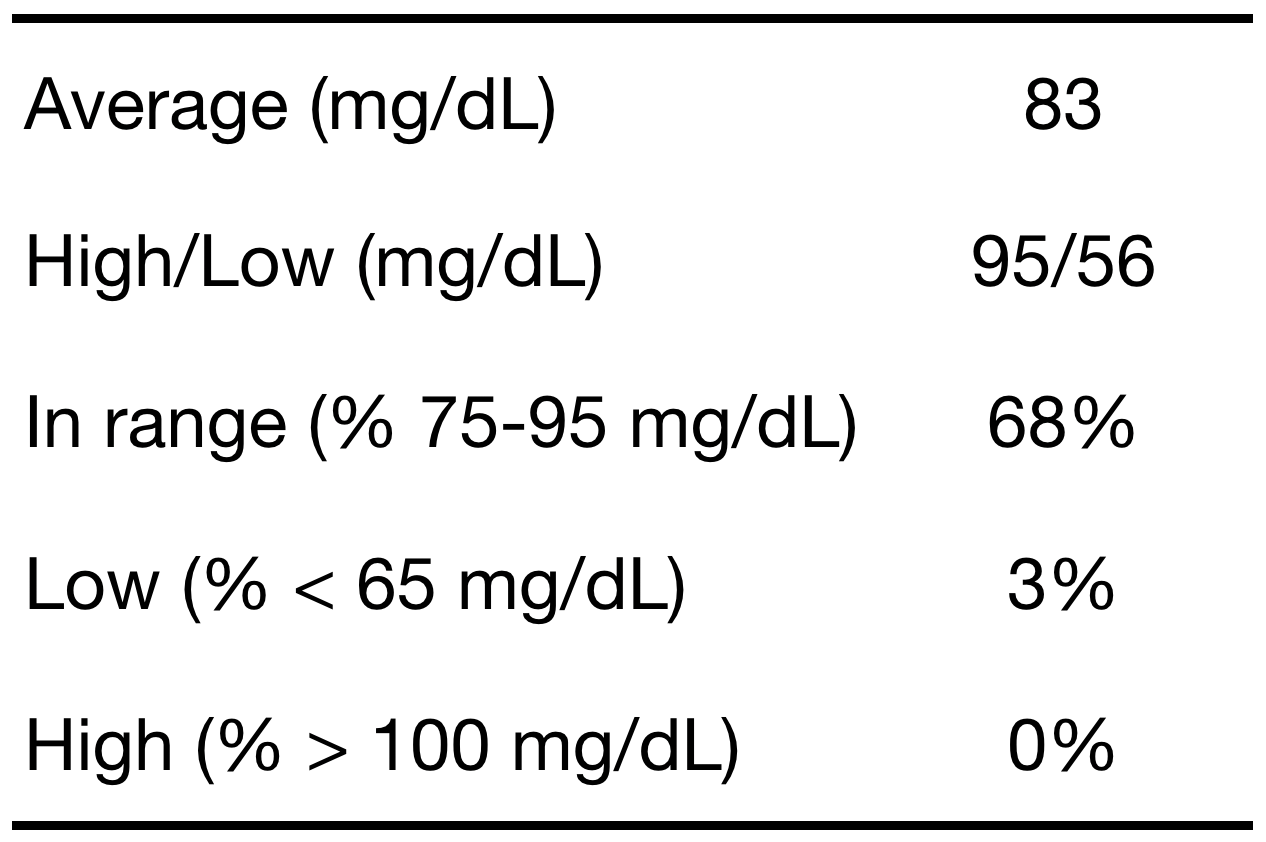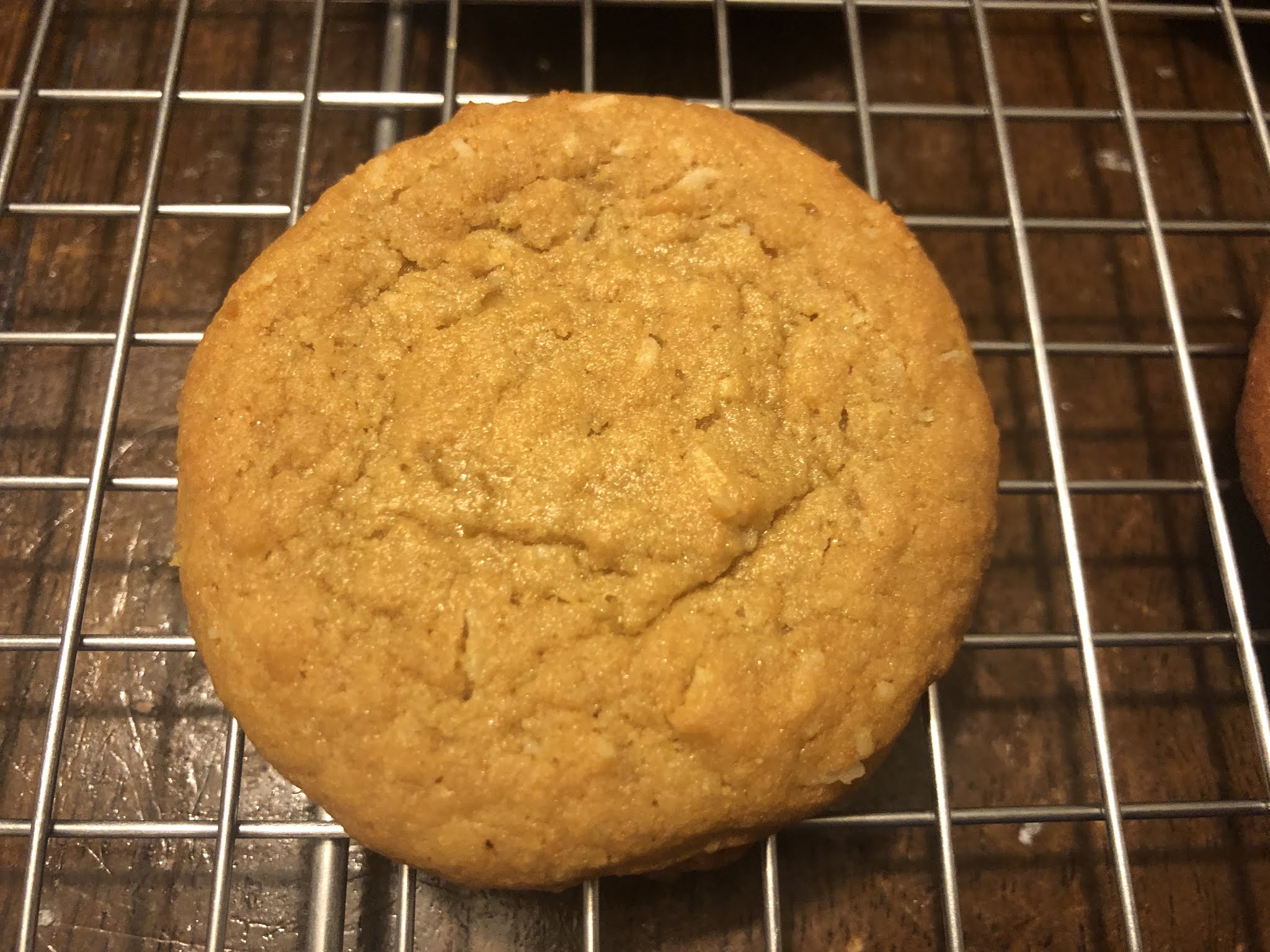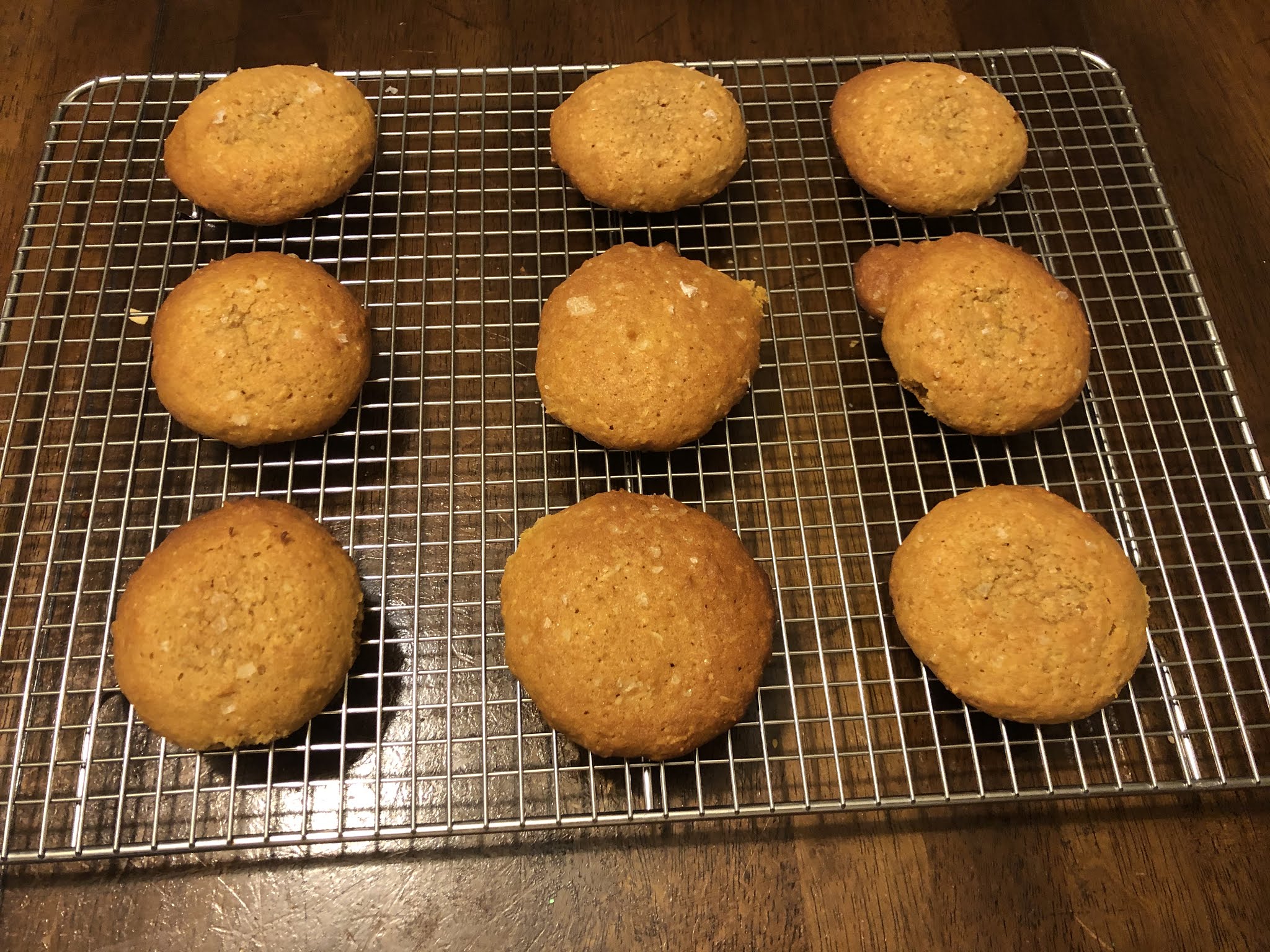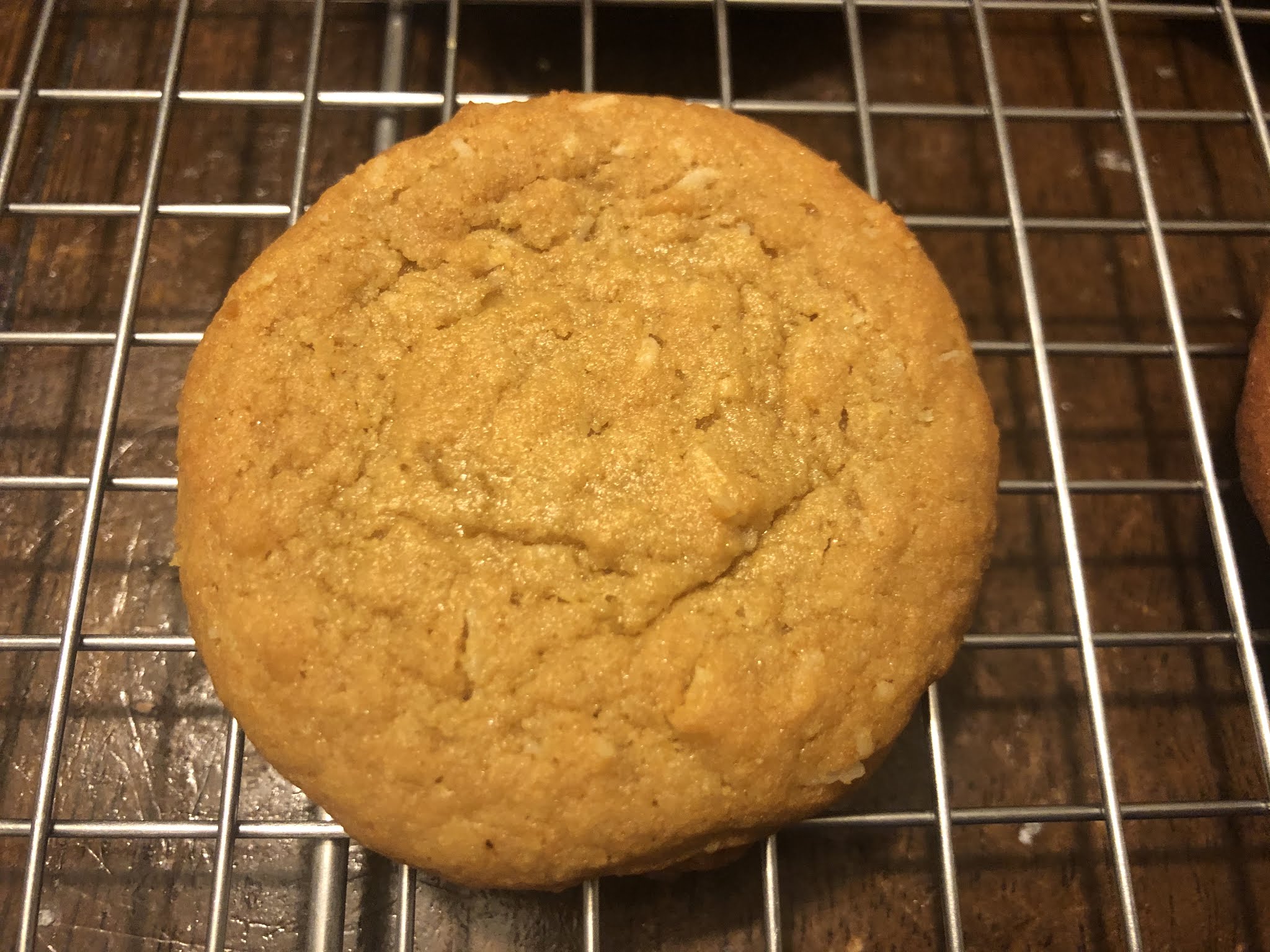Get new posts by email or rss feed
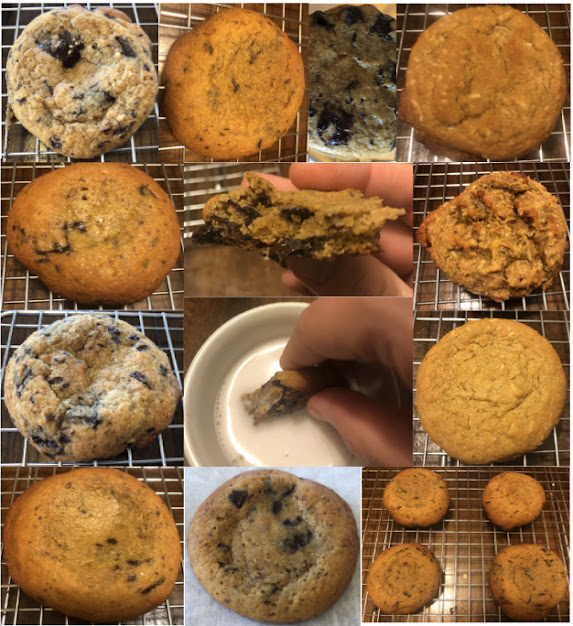
Note: This is an updated version of my previous post on this recipe. Since my first attempts, I’ve tried out 10 new batches, with big improvements in taste and texture. I also worked out a low-calorie version with shredded coconut instead of chocolate.
I’ve been trying to work out a low-carb chocolate chip-cookie dough ice cream to go along with my other ice cream recipes, but I haven’t liked any of the low-carb cookie dough recipes I’ve found on-line. All of them either didn’t really taste like a traditional chocolate chip cookie dough or were too soft even when frozen.
Since the oat-fiber muffins turned out so good, I decided to see if I could use an oat-fiber/whey protein base to make a cookie dough. The results turned out surprisingly good for a first attempt. Still needs some work, but I thought I’d share now to get some advice before I keep developing.
Initial Adaptation
As a starting point, I based my recipe on the classic Nestle Toll House cookie, with the following modifications:
- Flour → 80g oat-fiber + 44g whey protein + 16g gluten (same ratio as my oat-fiber muffins)
- White sugar → allulose (1:1 by weight)
- Brown sugar → allulose (1:1 by weight) + molasses (10% of sugar by weight, adapted from here)
- Chocolate chips → 1 cup shredded coconut (I didn’t have any sugar-free chocolate chips, wouldn’t have done this otherwise.
- Added 50% more egg to get to the right dough consistency.
- Added a sprinkle of flaky sea salt to the top of the cookie before baking.
This was a pretty good start:
- Good:
- They tasted very similar to chocolate chip cookie dough (minus the chocolate)
- They froze to a good texture.
- While not as good as chocolate chips, the shredded coconut gave a nice flavor and texture to the dough.
- Con:
- When baked, the cookies puffed up and had more of a bread/muffin texture than a cookie texture.
- The amount of coconut was more than I’d like.
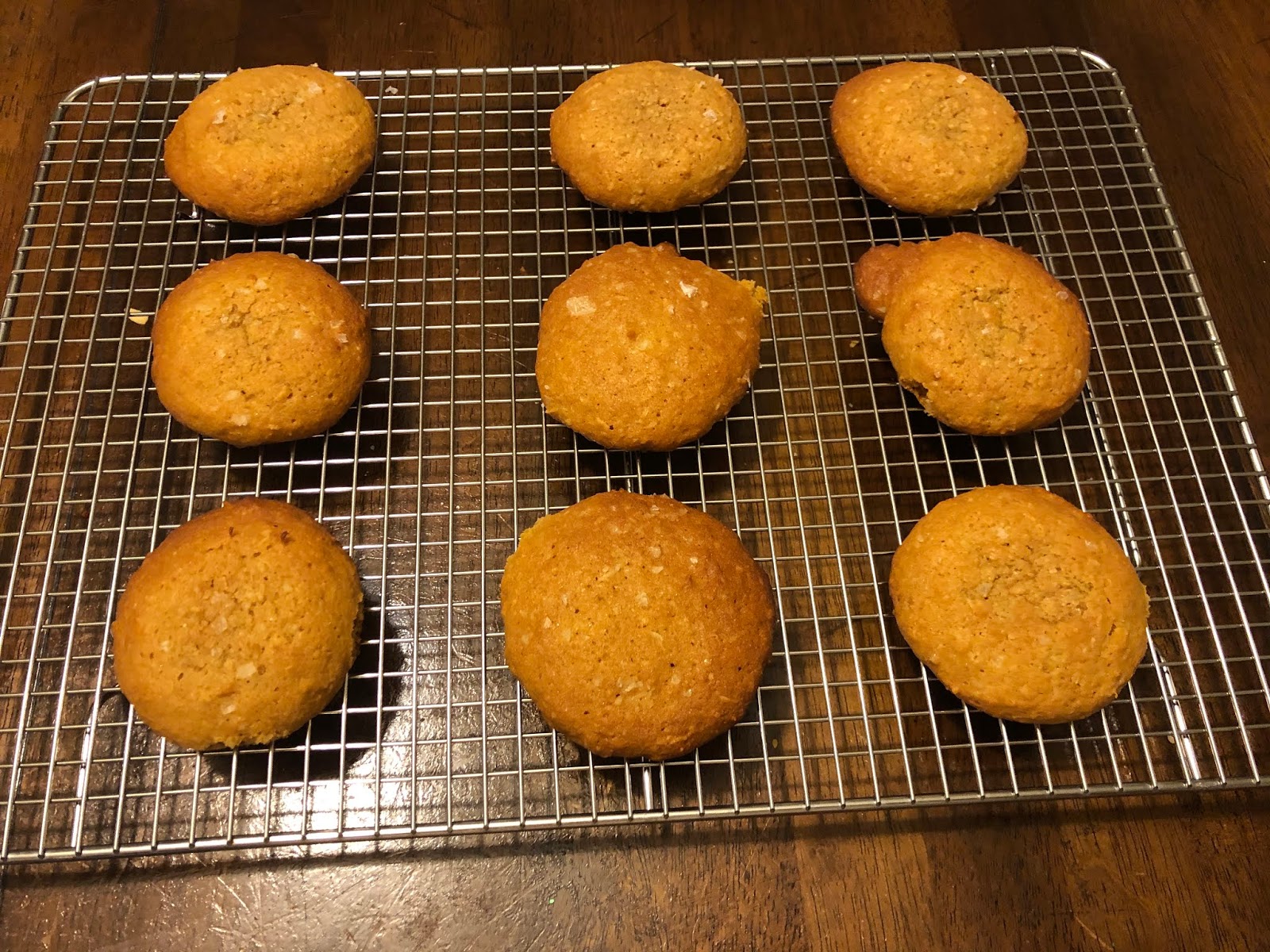
To fix the texture problem, I made the following changes:
- Removed gluten (it prevented the muffins from deflating, so removing it should reducing “puffing”)
- Went from 2 eggs to 1 egg + 1 yolk (less egg white should give a less stable structure)
- Halved the amount of coconut.
This was a big improvement. The taste of the dough stayed the same, but the cookies spread and gave a texture very similar to a chewy chocolate chip cookie.
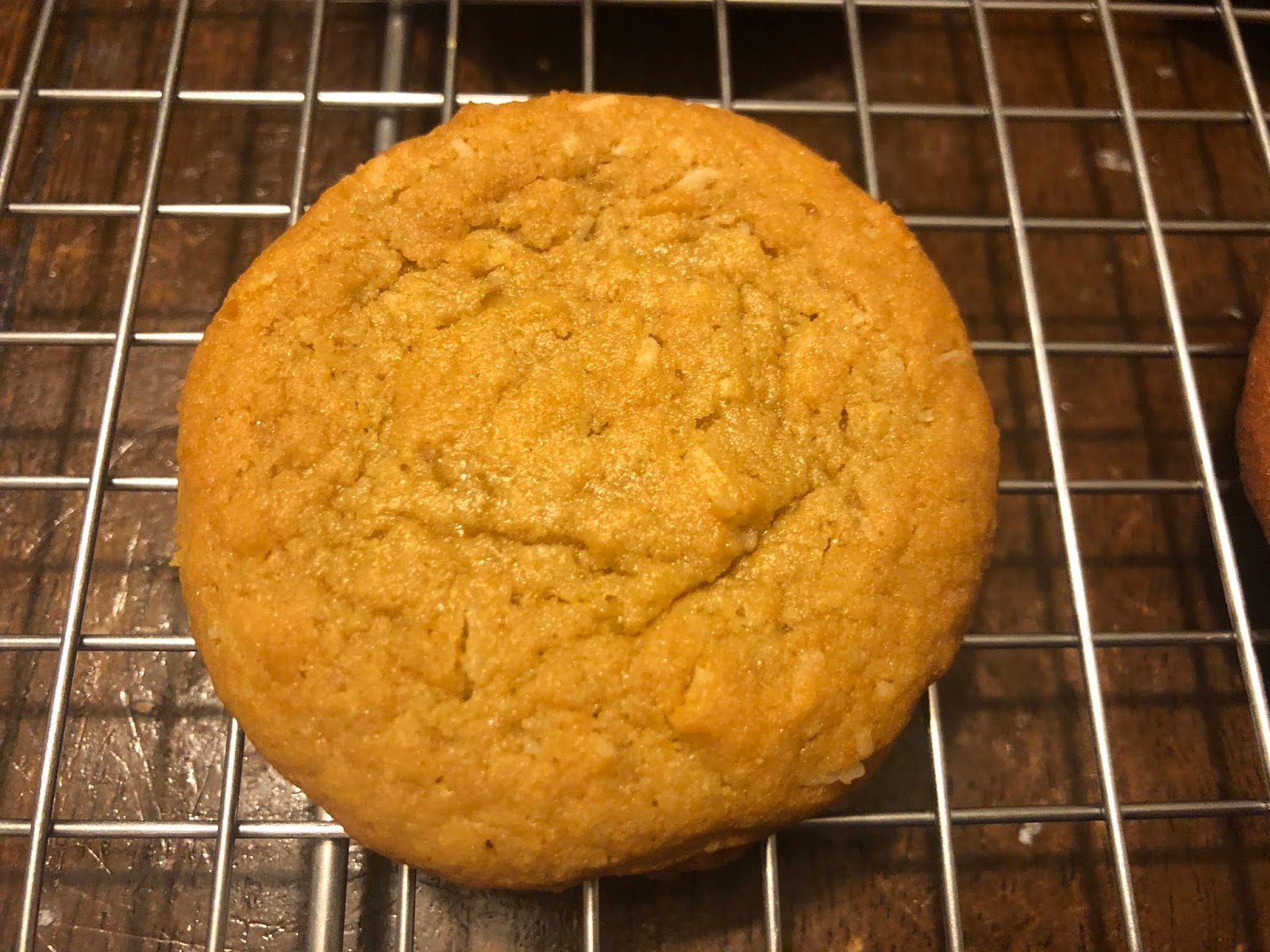
This will work great for cookie dough ice cream. For cookies, though, I prefer a crisper cookie. Based on recommendations for regular chocolate chip cookies, there’s a few options on how to do this:
- Reduce the molasses content (would help the carbs count, but probably make it taste worse. Could try substituting some “brown sugar” erythritol instead?)
- Lower the temperature to let the cookies spread more before setting
- Reduce the amount of egg white (hard to do as I’m already at 1 egg, but I could add yolks and whites separately).
At this point, I posted the recipe to r/ketorecipes on Reddit and got additional suggestion to try a blend of erythritol and allulose (erythritol for crispier texture, but keep some allulose to mitigate “cooling effect”).
Round 1: Optimizing Texture
Based on the ideas above, I tried the following experiments:
- All: I bought some Montezuma 100% cocoa chocolate from Trader Joe’s (surprisingly not bitter!) and used that in all recipes. I really l like the taste and texture it adds, particularly the contrast with the sweet taste of the cookie.
- Reduced baking temperature and increased time (375 °F/11 min., 350 °F/13 min., 325 °F/15 min., 325 °F/16 min.)
- Taste: no change
- Texture: no significant change, maybe slightly less chewy…
- Spread: no change
- Conclusion: Original time/temp (375 °F/11 min.) is best
- Went from 1 egg + 1 yolk to 2 yolk, plus added 10 g almond milk (needed to get dough to correct consistency)
- Taste: creamier, less drying
- Texture: slightly crispier
- Spread: Much more spread during baking, similar to a regular cookie
- Conclusion: Definite improvement in taste and I prefer the more spread out/thinner shape
- Replace 50% of allulose with erythritol
- Taste: no change (no perceptible cooling effect)
- Texture: much crispier
- Spread: no change
- Conclusion: Much closer to my preferred texture
This was a big improvement in just a few tries and pretty close to what I wanted. I had originally planned to try out a bunch more variations (flour:fat & flour:protein ratio, amount of molasses, type of protein, etc.), but these were so good I decided to just combine the improvements and see if that did the trick.
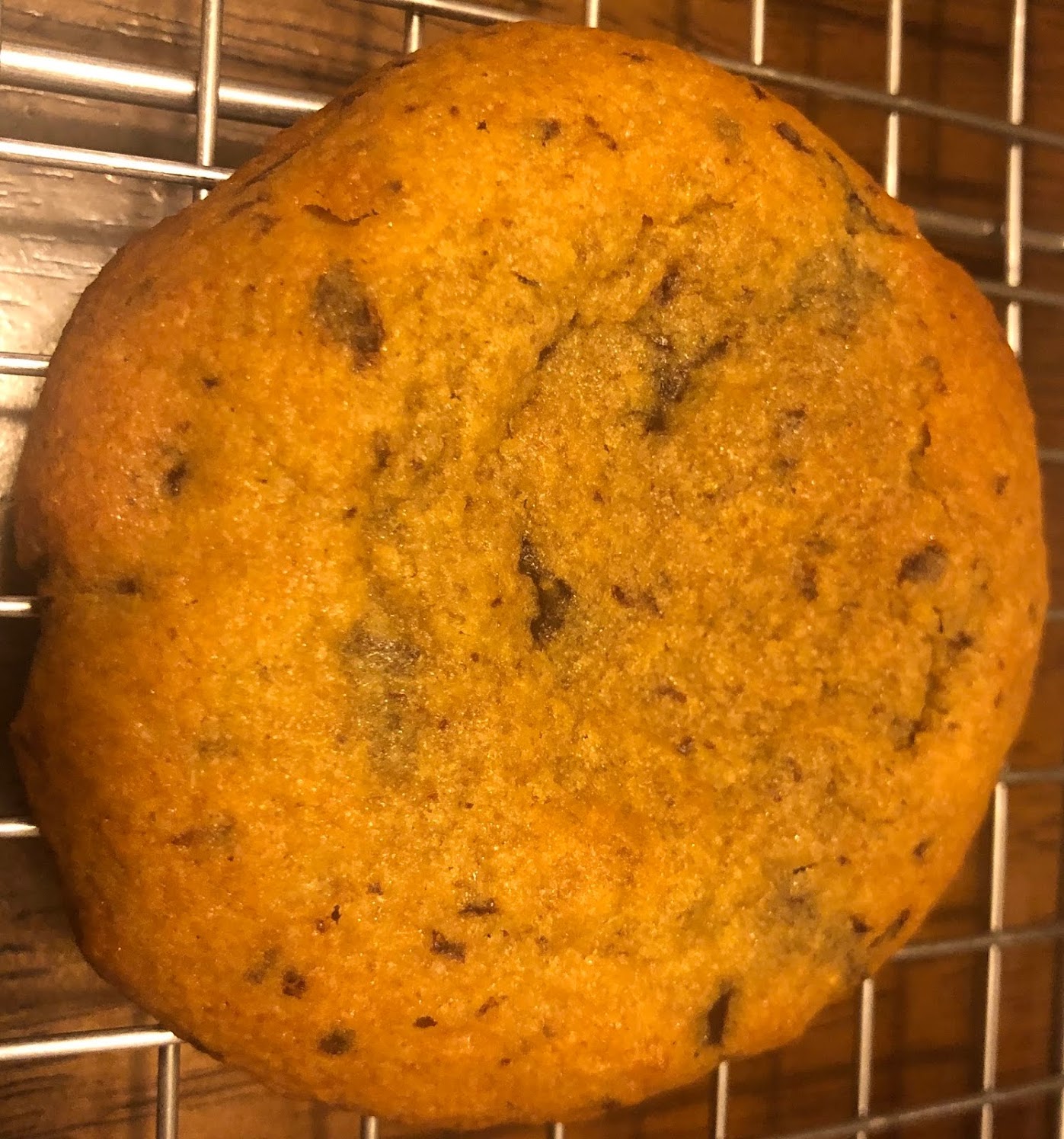
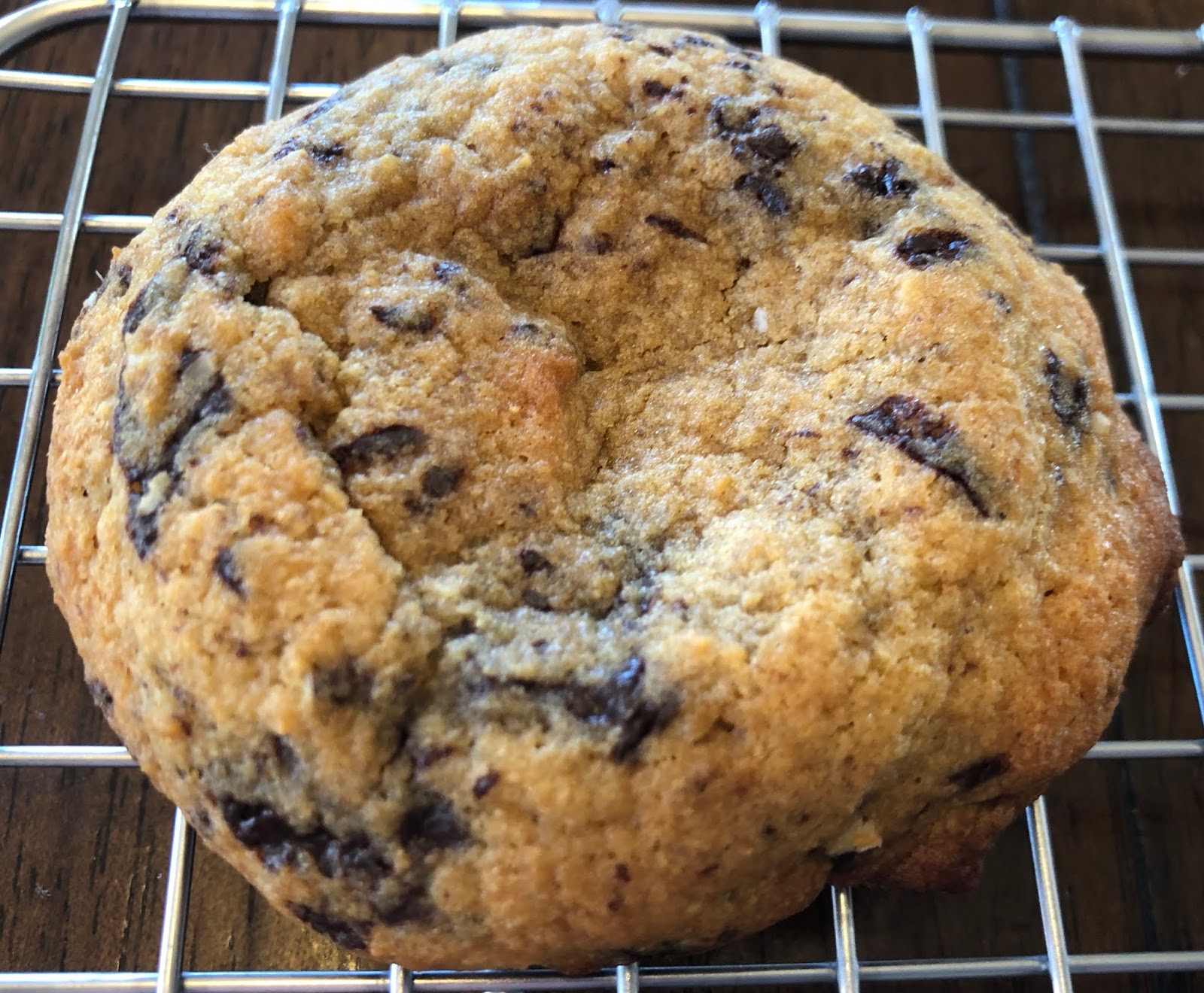
Round 2: Combining Changes & Low-Calorie Version
Based on the success of round 1, I made a batch combining all the improvements together. I also made a couple batches using yogurt and shredded coconut in place of the butter and chocolate to reduce calories.
- 2 egg yolk + 30 g almond milk + 50% erythritol
- Taste: Fantastic, really tastes like a Nestle’s toll house cookie.
- Texture: crispy on the edges, soft/chewy on the inside. I’d prefer a little crispier, but this is great.
- Spread: Just like a regular chocolate chip cookie
- Conclusion: Got the combined improvements from Round 1. While it could always improve, this was almost exactly what I was looking for.
- Replace butter with yogurt & chocolate with shredded coconut. Removed almond milk (dough was already too “wet” before adding)
- Calories: Drops from 106 to 36 calories/cookie
- Taste: Not as good as the butter/chocolate version, but pretty good. Much “lighter”.
- Texture: Way too “bready.” Must be an effect of the yogurt.
- Spread: Much less
- Conclusion: Ok for a first try, but the “bready” texture is a real problem. Will try less yogurt.
- Same as above except half as much yogurt + 10g almond milk
- Calories: Drops from 106 to 36 calories/cookie
- Taste: Same. Not as good as the butter/chocolate version, but pretty good. Much “lighter”.
- Texture: Back to normal. Crispy on the outside, chewy on the inside.
- Spread: Still didn’t spread as much as the butter/chocolate cookie, but not a big deal.
- Conclusion: This was great. I prefer the taste of the chocolate/butter based cookie, but I can eat a lot more of these. Will definitely make again.
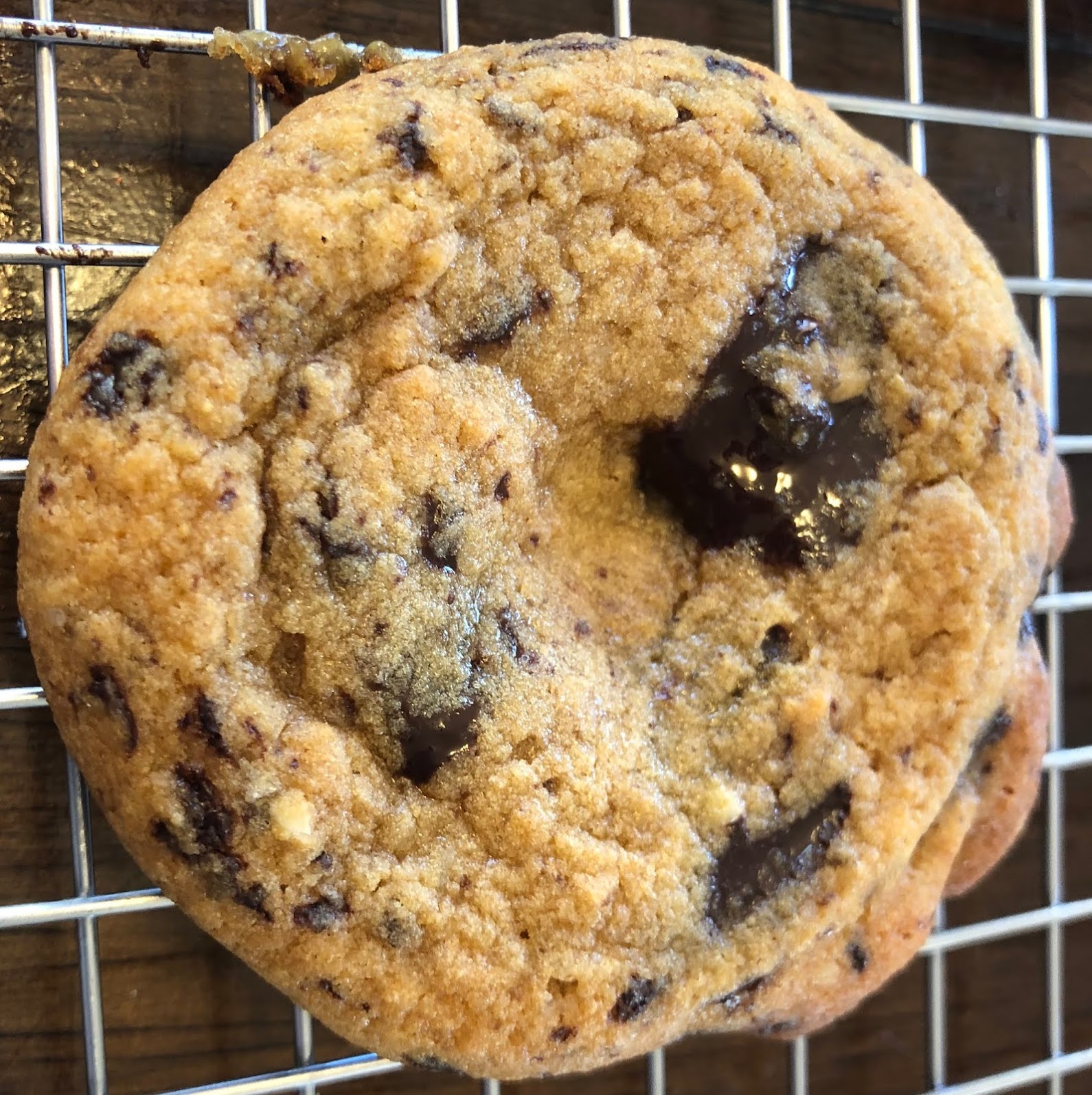
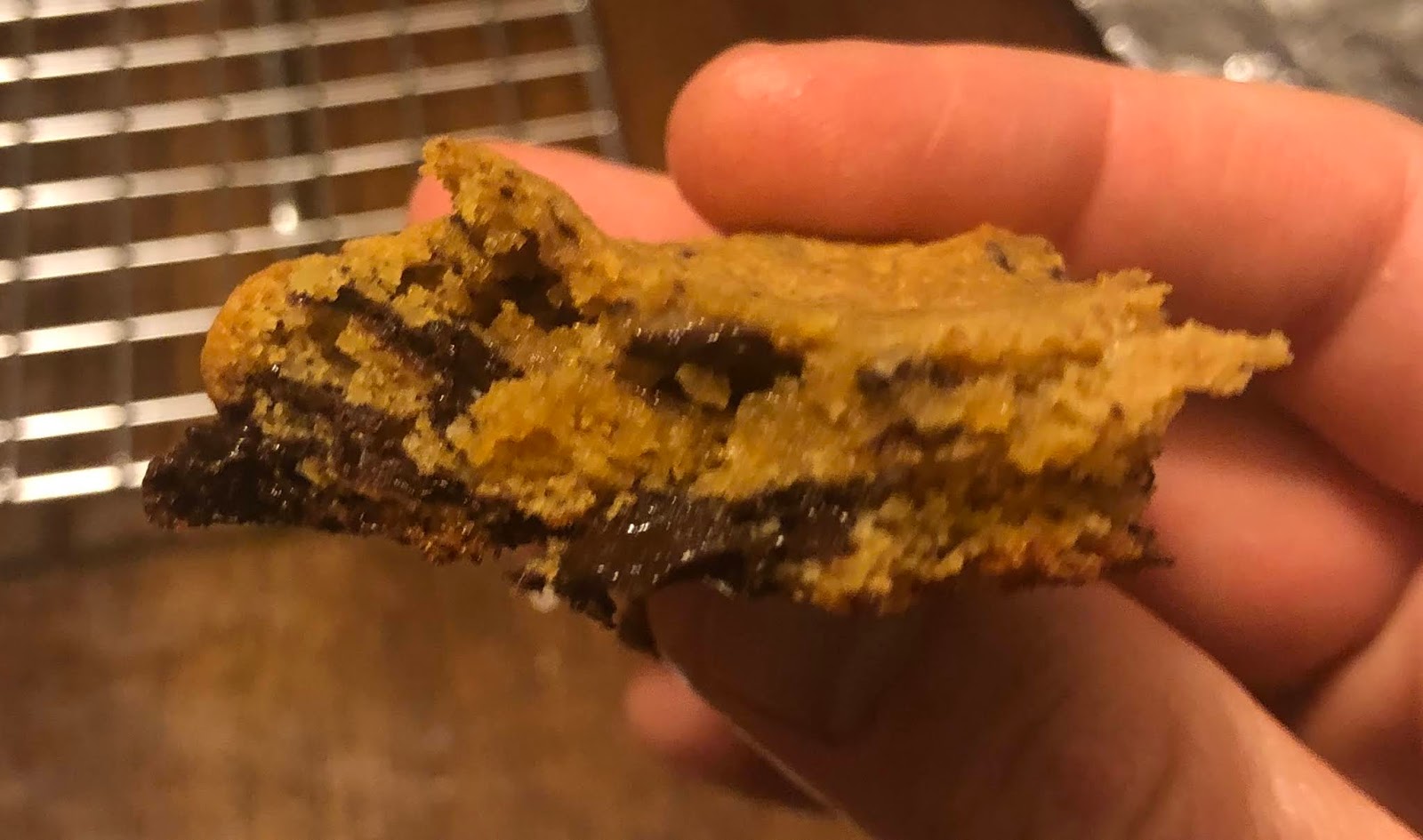
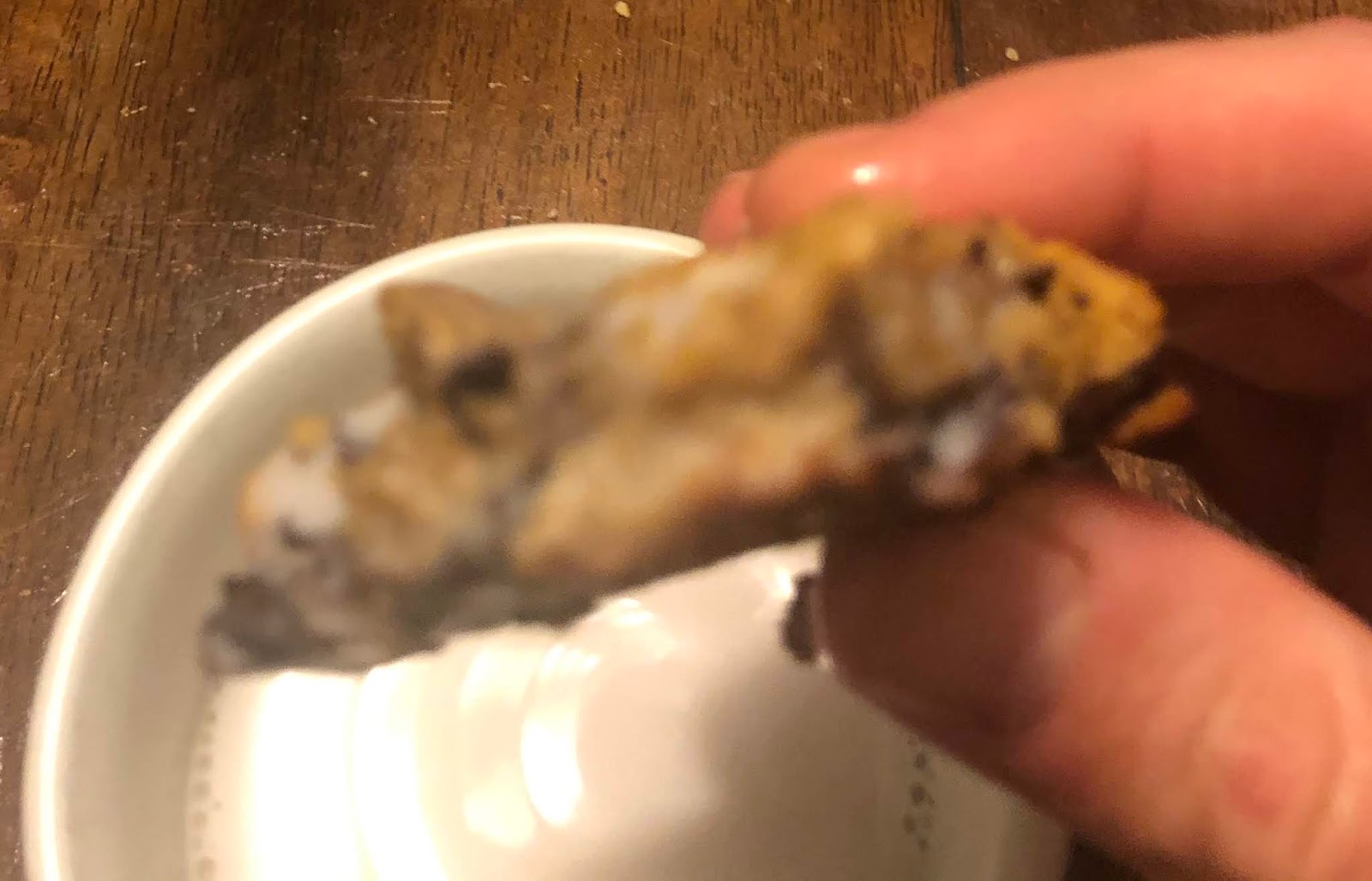
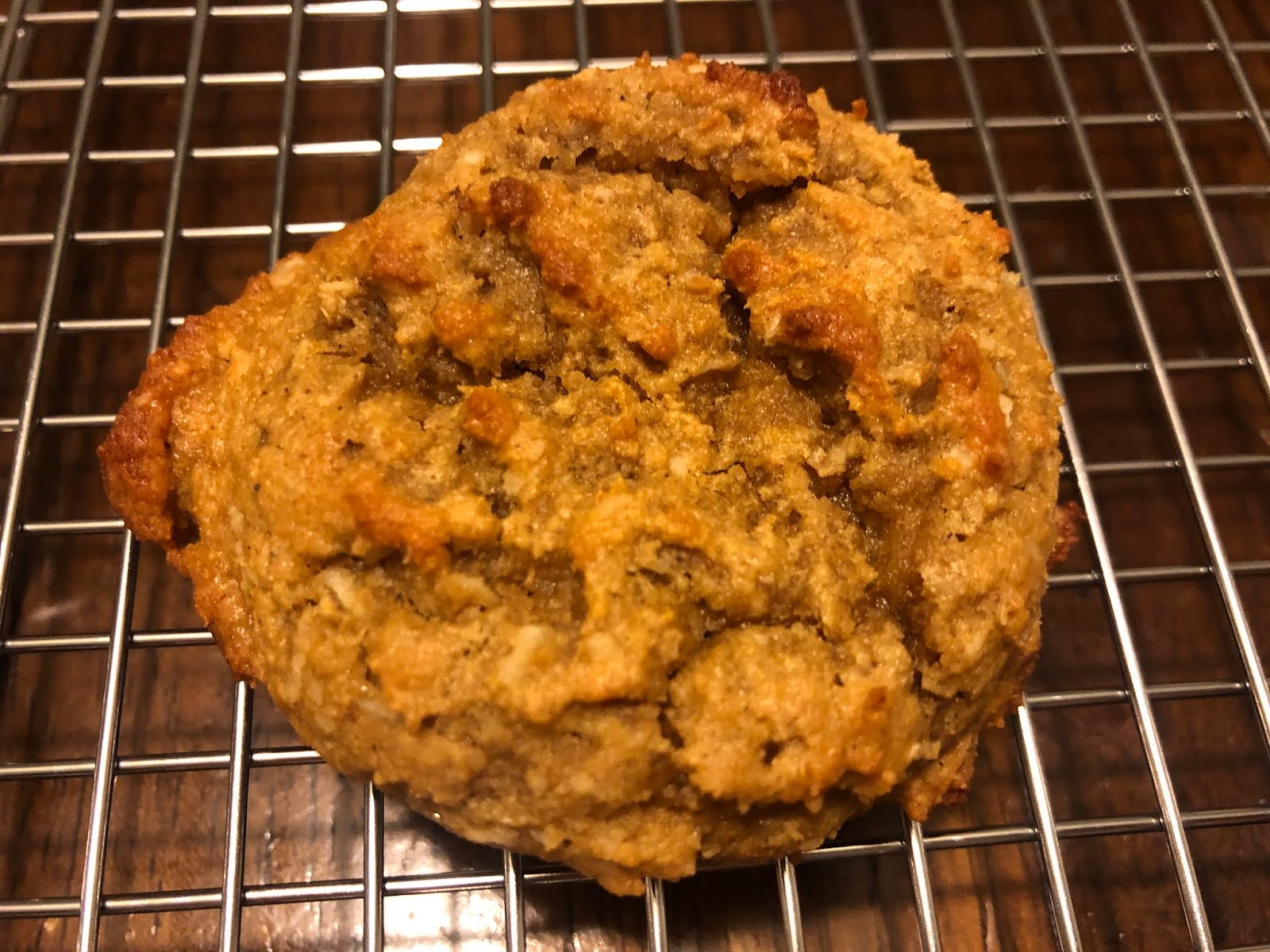
My original plan was to do a whole bunch more batches with different substitutions and varying ratios, but I’m really happy with how these turned out. I might come back to this recipe in the future if I want to really dial it in or get a different effect, but for now I think I’ll leave it as is and start working on something else.
Hope you enjoy it,
– QD

Low-carb Adaptation of Nestle Toll House Cookies
Ingredients
- 80 g oat fiber
- 44 g whey protein isolate
- 0.5 tsp baking soda
- 0.5 tsp salt
- 1 stick butter, room temperature
- 75 g allulose
- 75 g erythritol
- 7.5 g molasses
- 1 tbsp. vanilla
- 2 egg yolks
- 30 g unsweetened almond milk
- 100 g chocolate, chopped (I like Montezuma brand with almond & sea salt)
Instructions
- Preheat oven to 375 °F.
- Whisk together oat fiber, whey protein, baking soda, and salt.
- Cream butter, allulose, erythritol, molasses, and vanilla with a stand or electric mixer.
- Beat in egg yolk and almond milk, then slowly beat in oat fiber mixture, then fold in chopped chocolate.
- Transfer to a lined baking sheet (I use a 1″ cookie scoop) and bake for 11 min.
- Let cool on a wire rack, then serve.
Notes
Nutrition

Low-carb, Low-calorie Coconut Cookie
Ingredients
- 80 g oat fiber
- 44 g whey protein isolate
- 0.5 tsp baking soda
- 0.5 tsp salt
- 55 g yogurt
- 75 g allulose
- 75 g erythritol
- 7.5 g molasses
- 1 tbsp vanilla extract
- 2 egg yolks
- 10 g unsweetened almond milk
- 40 g shredded coconut
Instructions
- Preheat oven to 375 °F.
- Whisk together oat fiber, whey protein, baking soda, and salt.
- Cream yogurt, allulose, erythritol, molasses, and vanilla with a stand or electric mixer.
- Beat in egg yolk and almond milk, then slowly beat in oat fiber mixture and shredded coconut.
- Transfer to a lined baking sheet (I use a 1″ cookie scoop) and bake for 11 min.
- Let cool on a wire rack, then serve.
